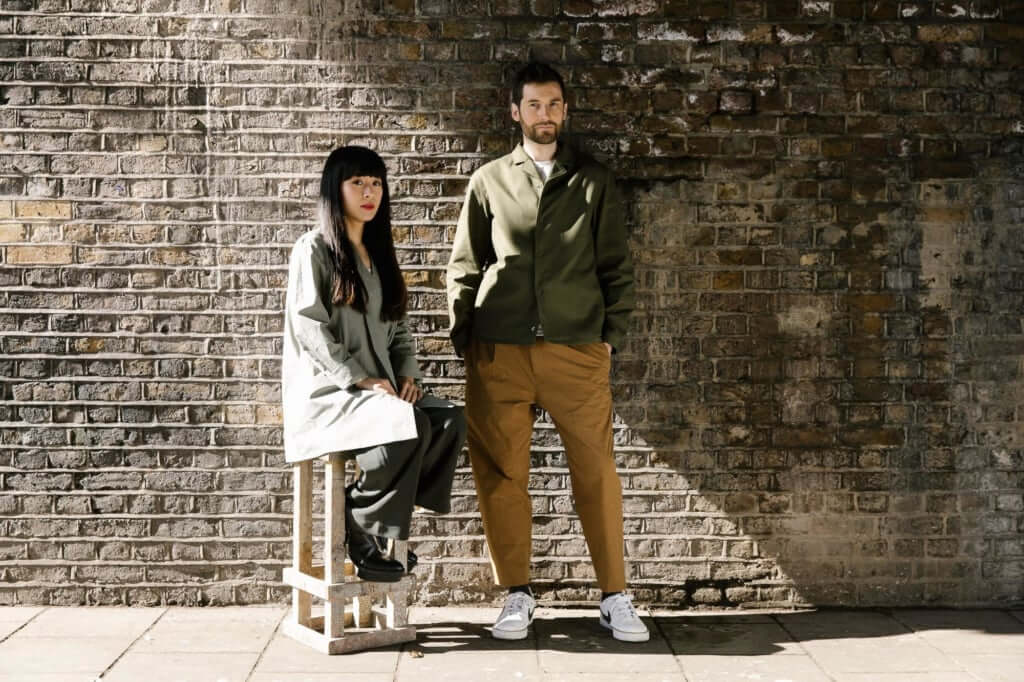The Japanese Architect and British Artist at the Forefront of Design
An overview of five projects by Studio Swine, founded by British artist Alexander Groves and Japanese architect Azusa Murakami.

© Emiliano Granado
The two designers, who came together in 2011 under the name of Studio Swine (Swine being an acronym for ‘Super Wide Interdisciplinary New Explorers’), have made a name for themselves thanks to their quirky installations that have been exhibited all over the world, from Milan to New York. They respect the primary vocation of design—‘to turn a problem into an opportunity’—while referencing literature, cinema, travel, art, and poetry. Here’s an overview of five of Studio Swine’s creations.
‘Wave Particle Duplex’: encapsulating matter to bring it up to date (2019)
View this post on Instagram
Wave Particle Duplex, produced during a six-month residency at the A/D/O creative space in Brooklyn, is a series of works that the creators describe as ‘ephemeral tech’. In a room with red walls, they mounted frames containing tubes filled with plasma in the same colour. Another room, this time painted yellow, contains fog sculptures: a mixture of coloured acrylic gel and steam, held in a 3D glass frame. This installation captures matter and showcases it. It invites the viewer to take a moment to see the world around them in a different way, in a time when attention spans are short.
‘New Spring’: an ode to renewal in an abandoned place (2017)
View this post on Instagram
For the 2017 Salone del Mobile in Milan, Studio Swine worked with ready-to-wear brand COS to present an installation inspired by Japanese cherry trees at Cinema Arti, a cinema dating back to the 1930s that has now fallen into disuse. Designed to be an ‘interactive and multisensory’ experience, New Spring is a six-metre-high sculpture in the shape of a tree, its design inspired by the chandeliers found in Milanese palazzos. In a reference to the Hanami festival (which takes place in Japan every April and is a symbol of rebirth), it mimics the flowering of cherry blossom. At the end of each of its immaculate branches are bubbles of perfumed vapour that burst when touched.
‘Fordlândia’: a micro-collection inspired by the excesses of Fordism (2016)
View this post on Instagram
A state-of-the-art hospital, a public swimming pool, golf courses: in 1928, car maker Henry Ford created the company town Fordlândia from nothing, in an isolated area of Brazil, in the heart of the Amazon rainforest. This area was supposed to provide the Ford factories with rubber, but never reached the level of success anticipated by its creator, who would go on to resell it several decades later. Since then, this ghost town (with 3,000 residents) has been attracting curious visitors, and artists in particular: comic artist Franquin devoted a volume of Marsupilami to it (Fordlândia, 1991) and Studio Swine took inspiration from it to create urban furniture: the armchairs and chairs in their Fordlândia collection were made from materials from the Amazon rainforest, including ebonite (a natural, ‘vulcanised’ rubber that is similar to ebony in appearance, and to which sulphur is added to make it more resistant).
Gyrecraft: luxury objects made from plastic waste from oceans (2015)
View this post on Instagram
In Gyrecraft, plastic moves away from mass production lines and takes on a new, more artisanal existence. In 2014, Azusa Murakami and Alexander Groves took a boat from the Azores and travelled one thousand nautical miles (1852 km) to the North Atlantic Gyre, one of the five major ‘trash vortexes‘ in the world. On the boat, they carried a Solar Extruder. This machine, which collects plastic waste from the sea and melts it in a solar oven heated to 200°C, enabled them to create new objects on the boat, without needing to set foot on land. From the plastic collected, Studio Swine produced a series of five luxury objects—one for each gyre—inspired by maritime craftsmanship (like the scrimshaw craft of engraving fishing scenes on whales’ teeth and bones, an art born in the Azores and which has now virtually died out).
More information on Studio Swine can be found on its website.
TRENDING
-
A Rare Japanese Garden Hidden Within Honen-in Temple in Kyoto
Visible only twice a year, ‘Empty River’, designed by landscape architect Marc Peter Keane, evokes the carbon cycle.

-
Colour Photos of Yakuza Tattoos from the Meiji Period
19th-century photographs have captured the usually hidden tattoos that covered the bodies of the members of Japanese organised crime gangs.

-
Recipe for Ichiraku Ramen from ‘Naruto’ by Danielle Baghernejad
Taken from the popular manga with the character of the same name who loves ramen, this dish is named after the hero's favourite restaurant.

-
Modernology, Kon Wajiro's Science of Everyday Observation
Makeup, beard shape, organisation of cupboards and meeting places: all of these details decipher 1920s Tokyoites.

-
Hitachi Park Offers a Colourful, Floral Breath of Air All Year Round
Only two hours from Tokyo, this park with thousands of flowers is worth visiting several times a year to appreciate all its different types.





